Have you ever been truly hurt? Not just the everyday headache or the post-bike accident scraped knee kind of hurt?
Screamworthy paper cuts aside, the realm of pain is full of variety. There’s the sharp, stinging pain that comes with stings, cuts, and bites. The dull throbbing and excruciating radiating pains that can accompany broken bones. And while pain is subjective, some have been acknowledged to be universally horrible.
Here, in no particular order, are the 25 Worst Human Pain Based On Science.

Post-Surgical Pain
 https://twincitiespainclinic.com/conditions/post-surgery-pain/
https://twincitiespainclinic.com/conditions/post-surgery-pain/ Just about every procedure that sees you lying in a theatre will result in some level of acute post-surgery pain after the surgery, as your body knows it’s time to heal the wound. The surgeon will likely have had to cut through your muscles and nerves, which activated your body’s automatic injury responses, like inflammation.
For some people, however, it gets even worse. For them, chronic post-surgery pain can sometimes continue for months – even after the surgical site has healed. Chronic post-surgery pain is believed to result from damage to one or more of your peripheral nerves. The debilitating symptoms can include aching pains, shooting pains, burning pains, and sensitivity to touch or temperature.
Chronic Lower-Back Pain
 https://www.hopkinsmedicine.org/health/conditions-and-diseases/back-pain/lower-back-pain-what-could-it-be
https://www.hopkinsmedicine.org/health/conditions-and-diseases/back-pain/lower-back-pain-what-could-it-be If you’ve ever had lower back pain, you will have the sympathy needed for the poor man or woman who ends up with chronic lower back pain. Can you imagine having that type of debilitating pain for months on end?
To make things worse, your lower back only consists of five vertebrae, which is less than you have in your neck! You would think we would be able to handle the pains it brings a little better.
Unfortunately, our lower backs do almost all our heavy lifting. This is where your spine connects to your pelvis, so those five vertebrae have to carry the weight of your upper body. The area is subjected to a great deal of movement and stress, which, unfortunately for us, easily results in wear, tear, and injuries.
Post-Traumatic Pain Syndrome
 https://austinpaindoctor.com/pain/post-traumatic-pain
https://austinpaindoctor.com/pain/post-traumatic-pain As if post-surgical pain or even chronic post-surgical pain wasn’t bad enough, the universe decided to bless us with post-traumatic pain syndrome.
And trust me, it’s even worse than it sounds.
An accident or surgery that causes traumatic pain can cause post-traumatic pain syndrome. It is characterized by long-lasting, intense pain that continues long after the original wound is healed. Even though post-traumatic pain syndrome is not an official medical diagnosis, up to 40% of people who experience trauma will experience permanent pain after recovery.
Hornet Sting
 https://www.prevention.com/health/a32375891/hornet-sting-treatment/
https://www.prevention.com/health/a32375891/hornet-sting-treatment/ Have you ever heard of the Schmidt Sting Pain Index? Justin O. Schmidt, a specialist in entomology at the Carl Hayden Bee Research Centre in Arizona, developed it. Essentially, it is a long list of all the insect stings to which Schmidt and his crew submitted themselves in order to obtain bite and sting severity data.
Among their tests was the wild variety of stings by wasps and hornets. The scientists said the hornet sting was slightly crunchy, rich, and hearty.
I don’t know if those are the words I would have used.
The feeling is said to be similar to getting your hand squashed in a revolving door for five minutes or more. We’ll get back to insects a bit later.
Drawing Arterial Blood Gas
 https://my.clevelandclinic.org/health/diagnostics/22409-arterial-blood-gas-abg
https://my.clevelandclinic.org/health/diagnostics/22409-arterial-blood-gas-abg Have you ever had to have your arterial blood gasses drawn? It is no walk in the park.
It’s so painful because your arteries lie much deeper than your veins. As an added bonus, they are surrounded by nerves, and the needle usually has to enter your body at your wrist area to obtain the sample. You may experience dizziness, nausea, and lightheadedness while medical personnel take blood from an artery, so it’s best to sit or lie down for the procedure.
CRPS Or Complex Regional Pain Syndrome
 https://timesofindia.indiatimes.com/etimes/trending/10-year-old-battles-through-the-most-painful-condition-known-to-mankind
https://timesofindia.indiatimes.com/etimes/trending/10-year-old-battles-through-the-most-painful-condition-known-to-mankind Complex Regional Pain Syndrome (CRPS), is a strange, chronic pain disorder that typically develops after a stroke, heart attack, or surgery and usually affects an arm or a leg. There is an enormous degree of pain compared to the actual severity of the injury.
Its symptoms can include continuous burning or throbbing in the affected limb, swelling, skin texture and temperature changes, joint stiffness, muscle spasms, tremors, and decreased mobility. CRPS can progress to other parts of the body or opposing limbs. Some people’s CRPS signs and symptoms resolve on their own. In others, signs and symptoms can last for months or even years. Early treatment is critical.
Second Degree Burns
 https://www.mayoclinic.org/diseases-conditions/burns/symptoms-causes
https://www.mayoclinic.org/diseases-conditions/burns/symptoms-causes Burns can be excruciating and are classified into categories based on severity. First-degree burns damage the first or outer layer of the skin – think sunburn.
Second-degree burns affect the deeper layers and come with blisters and swelling – think fire, hot oil, or curling iron.
Now, imagine that on a large surface of your body.
If a second-degree burn covers a large area of your skin (more than 10%), you’ll have to go to your nearest emergency department for treatment. The same goes for children younger than 5, people above 70, or those with a compromised immune system.
A Stonefish Sting
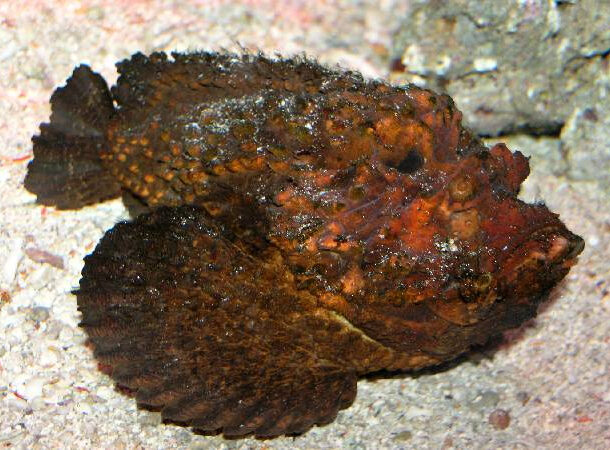 https://www.mountsinai.org/health-library/poison/stonefish-sting
https://www.mountsinai.org/health-library/poison/stonefish-sting It has been described as being worse than childbirth or being crucified. No, we’re not talking about man-flu; we’re talking about the venomous Stonefish sting.
I’ve never had the misfortune of being stung by one of these ugly critters, but it is said to be absolutely excruciating. Apart from intense pain and swelling at the site of the sting, the swelling can spread to an entire arm or leg within just a few minutes and move to the airways, lungs, and nervous system. If not treated immediately, the poison can kill the victim.
A Penile Fracture
 https://my.clevelandclinic.org/health/diseases/21707-penile-fracture
https://my.clevelandclinic.org/health/diseases/21707-penile-fracture If you’ve never heard about this type of fracture before, we’re sorry to break it to you.
A penile fracture is a very real injury, and it is more common than you think.
A fracture of this kind can be caused by any type of blunt force trauma and is characterized by extreme pain – the kind only a man can fully appreciate. It is classified as a medical emergency, so should you ever suspect an injury of this severity, go to your nearest emergency room immediately.
Broken Bones
 https://www.upmc.com/services/orthopaedics/conditions-treatments/fractures-and-breaks#:~:text=Some symptoms of a break,put weight on the area
https://www.upmc.com/services/orthopaedics/conditions-treatments/fractures-and-breaks#:~:text=Some symptoms of a break,put weight on the area I think most of us will have broken at least one bone by the age of 30. It’s a sharp, stabbing pain that quadruples in severity if someone touches or moves the damaged bone with any kind of pressure. You won’t be able to put weight on it, and if the bone isn’t protruding, there will likely be swelling, bruising, and tenderness at the site.
However, not all broken bones are equal. A broken femur, rib, or tailbone is infinitely more painful than a broken finger. But more on that a bit later.
Frost Bite
 https://www.cureus.com/articles/115003-severe-frostbite-on-both-hands-and-feet-in-a-vignette-case-from-physics-to-clinics#!/
https://www.cureus.com/articles/115003-severe-frostbite-on-both-hands-and-feet-in-a-vignette-case-from-physics-to-clinics#!/ Can you imagine freezing? I don’t mean merely feeling cold; I mean literally freezing. During the first stages of frostbite, people usually experience pins and needles and throbbing or aching in their extremities or the affected areas. Your skin turns cold, numb, and white.
Should your exposure be abnormal and for an extended period of time, the second stage will kick in. Your extremities or the affected area will become hard and cold. Should you be moved out of the cold, the tissue will thaw out, an excruciating process; it will turn red and blister. As the skin thaws, blood-filled blisters appear, followed by thick black scabs. Some tissue is likely to die at this point – the medical term is “tissue necrosis” – and the afflicted tissue may need to be excised to avoid infection.
If you thought Frostbite was quite tame for this list, stick around, you won’t believe what we have coming up!
Fibromyalgia Syndrome
 https://www.getreading.co.uk/news/uk-world-news/20-most-painful-conditions-person-21365888
https://www.getreading.co.uk/news/uk-world-news/20-most-painful-conditions-person-21365888 Imagine aching all over, only to be told it’s all in your head.
In addition to experiencing widespread pain, people with fibromyalgia syndrome (FMS) are criticized and questioned by medical professionals, wondering if their condition is actually real. Should you ever be diagnosed with Fibromyalgia, you will learn that insult is literally added to injury.
Fibromyalgia is characterized by a variety of physical symptoms, including chronic pain and discomfort throughout the body, depression, fatigue, and headaches.
Having A Broken Rib
 https://www.nhs.uk/conditions/broken-or-bruised-ribs/
https://www.nhs.uk/conditions/broken-or-bruised-ribs/ Believe me when I tell you that a broken rib is one of the most painful breaks you can survive in one lifetime. Yes, survive, because that’s what you’ll have to do for at least six of the twelve weeks it takes to heal. But it doesn’t stop there. A broken rib’s pain duration can take anywhere from 8 weeks to 24 months!
A broken rib is particularly painful as you can’t really “rest” the area while the bone is mending – it’s always moving because your rib cage contracts and expands as you breathe. Apart from the pain, it’s one of the most dangerous fractures, too, as a fractured end can easily puncture a lung, a condition called pneumothorax, which is potentially life-threatening.
Lingchi - Death By A Thousand Cuts
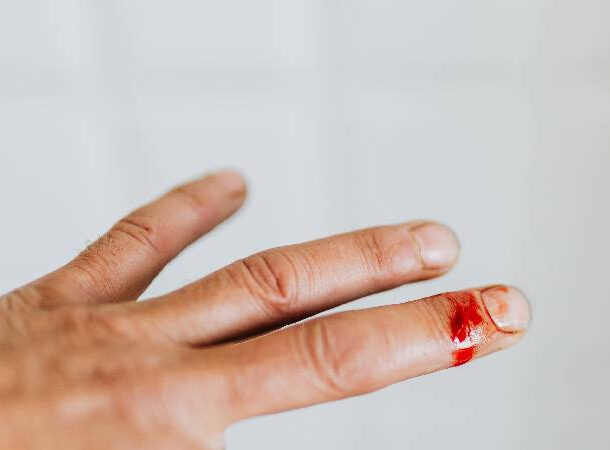 https://www.usopman.com/2021/08/top-15-most-painful-thing-human-can-experience.html
https://www.usopman.com/2021/08/top-15-most-painful-thing-human-can-experience.html In ancient China, lingchi, or death by a thousand cuts, was a brutal punishment method reserved for serious crimes like treason or mass murder. As the name suggests, the executioner took their time when they had to kill the lawbreaker.
After being chained to a post, the prisoner was cut into sections. The executioner then slowly removed segments that revealed the tissues underneath. Because the method was never prescribed by law, it varied from region to region. In some cases, the accused suffered more than 3,000 cuts; in others, it took only a few. Either way, the time differed depending on the officials and how much sympathy they had for the accused.
Irukandji Syndrome
 https://academic.oup.com/qjmed/article/99/6/425/2258978
https://academic.oup.com/qjmed/article/99/6/425/2258978 When most people hear the word “deadly,” they don’t immediately think of a teeny tiny animal in Australia’s warm coastal waters. You will, however, be sorry if you come into contact with an Irukandji jellyfish.
The stingers of the Irukandji jellyfish discharge venom, which triggers Irukandji syndrome. Its hallmarks are nausea, anxiety, painful limbs, and breathing difficulties. It also disrupts the electrical impulses sent through your heart. All of this happens within 20-40 minutes of being stung, leaving little time to react. With the proper medication, the symptoms usually disappear in a few weeks, but it has been known to stay around for much longer and can be fatal.
Dercum's Disease
 https://www.webmd.com/a-to-z-guides/what-is-dercum-disease
https://www.webmd.com/a-to-z-guides/what-is-dercum-disease Dercum’s disease is a very unusual, not to mention incredibly rare, disorder. People with it present with a lot of aching, fatty lumps that develop just below their skin. The bumps usually appear on the upper body but can also be present on the upper legs. They cause agonizing pain as they press on the nerves. Pain can come and go, but usually gets worse if you move.
Dercum can persist for months at a time, and apart from the pain and bruising, it also leaves people feeling tired, rundown, and stiff as they lose some of their mobility. The disease can be managed with treatment and medication, but no cure exists.
Bites Or Stings From The Red Harvester Ant
 https://extensionentomology.tamu.edu/insects/red-harvester-ant
https://extensionentomology.tamu.edu/insects/red-harvester-ant Harvester ants hold the distinguished title of having the most potent venom of all insects on earth. Within the species, Pogonomyrmex maricopa is the most dangerous – their venom is 20x stronger than a honey bee’s and 35x more potent than a western diamondback rattlesnake’s.
Red harvester ants will gift you with stinging bites that produce swelling and acute pain for several hours. As our friends over at the Schmidt Sting Pain Index put it, it feels more or less like someone is operating a drill to tunnel through your ingrown toenail. Yikes!
Liposuction
 https://www.healthline.com/health/most-painful-surgeries#liposuction
https://www.healthline.com/health/most-painful-surgeries#liposuction Have you ever watched Doctor 90210?
If you have, you’ll be familiar with liposuction. During this elective procedure, cosmetic surgeons remove subcutaneous fat and may do a bit of body sculpting. What they never show you is that it is an incredibly painful procedure.
Well, we’re here to set the record straight.
Should you ever decide to get liposuction, your immediate result will not be fun and laughter; it will actually be a lot of bruising and terrible discomfort. The recovery time is usually determined by the amount of fat removed and the location of the procedure, but the pain will last for several days – or weeks.
Total Hip Replacement
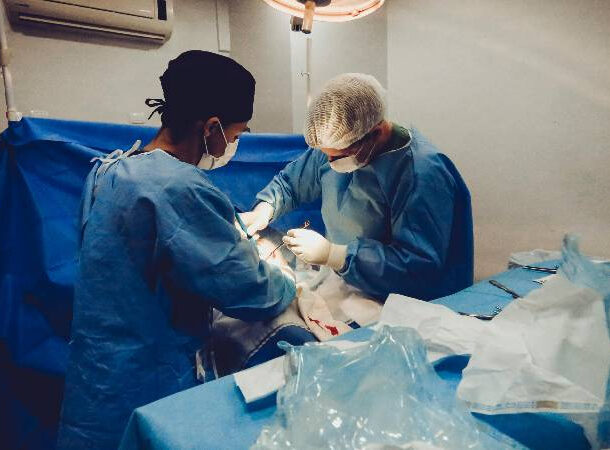 https://www.healthline.com/health/most-painful-surgeries#dental-implants
https://www.healthline.com/health/most-painful-surgeries#dental-implants Undergoing a total hip replacement is one of the most painful surgeries in the world. Just imagine not using your hips for two months or more – it’s practically impossible.
Those who have had the surgery describe the pain as a radiating, dull pain that moves into other parts of your body, like the groin and legs.
Luckily, the surgery is also one of the most successful. Full recovery can take up to a year, but most people can resume some of their normal daily activities two to three months after surgery with some help.
Being Boiled Alive
 https://www.nytimes.com/2003/08/17/world/idi-amin-murderous-and-erratic-ruler-of-uganda-in-the-70-s-dies-in-exile.html
https://www.nytimes.com/2003/08/17/world/idi-amin-murderous-and-erratic-ruler-of-uganda-in-the-70-s-dies-in-exile.html We should be glad that this particular method of execution isn’t used anymore. The condemned used to be stripped naked and either immersed in a vat of boiling liquid or a vat of cold liquid that would then be heated to boiling point. They used everything from oil to acid, tar, water, and even molten lead. During the time of King Henry VIII, it was a punishment explicitly reserved for poisoners.
In more recent times, the former president of Uganda, Idi Amin, was accused of using this torture method on his enemies.
Having A Heart Attack
 https://www.cdc.gov/heartdisease/heart_attack.htm#:~:text=Most heart attacks involve discomfort,light-headed%2C or faint
https://www.cdc.gov/heartdisease/heart_attack.htm#:~:text=Most heart attacks involve discomfort,light-headed%2C or faint While the “Hollywood heart attack” is often unrealistic, 1 in 4 people in the US die as a result of heart disease. In fact, It kills almost 800,000 people every year, that’s one every 36 seconds. But did you know there are several warning signs we can look out for?
The manifestation of a heart attack can include a variety of aches and pains and usually include a dull pain in the leg or arm, jaw or stomach pain (especially in women), sharp chest pains, shortness of breath, heart palpitations, and swelling in the feet, ankles, or legs.
If you are experiencing any of these symptoms, you should consult your doctor before you become another statistic.
Necrotizing Fasciitis
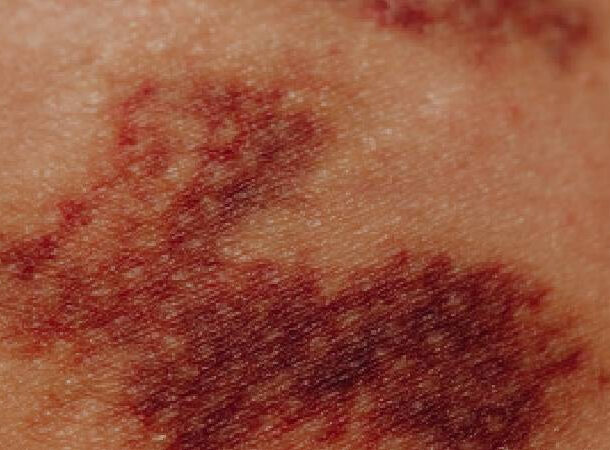 https://www.cdc.gov/groupastrep/diseases-public/necrotizing-fasciitis.html#:~:text=The infection often spreads very,is red%2C warm%2C or swollen
https://www.cdc.gov/groupastrep/diseases-public/necrotizing-fasciitis.html#:~:text=The infection often spreads very,is red%2C warm%2C or swollen Have you ever heard of flesh-eating disease? Necrotizing fasciitis literally causes a person to slowly rot away.
It is caused by pathogens that cause the skin to rot, especially when it gets rooted in the body’s deeper layers. It causes intense pain, including pain that radiates beyond the area of skin that is red, heated, or swollen.
While the illnesses that cause it differ, the viruses do not literally devour the flesh but rather release poisons that kill tissue, causing the syndrome. Necrotizing fasciitis is more common in drug and alcohol users, diabetics, and people with impaired immune systems and it can be lethal if not treated immediately, with 25 to 30 percent of cases being fatal.
Open Surgery On The Heel Bone
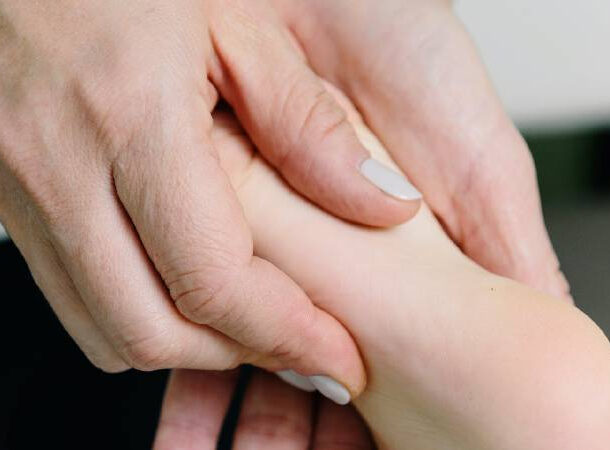 https://www.medicalnewstoday.com/articles/321779#most-painful-surgeries
https://www.medicalnewstoday.com/articles/321779#most-painful-surgeries A calcaneus or heel bone fracture is a disabling and harrowing injury. It usually happens after a high-energy event, like a car crash or a fall from a great height, when the heel ends up crushed under the body’s weight. While alternative therapies exist, surgery is usually the only way to repair it.
To access the broken bone, a surgeon must cut into the skin. They can then use plates or screws to reattach the bone. The skin surrounding the heel is thin, and there’s almost no soft tissue in this area. During surgery, the nerves surrounding the heel bone can get damaged easily. This, together with the implantation of screws to the bone, can make the procedure and recuperation painful, to say the least.
Knee Pain
 https://www.mayoclinic.org/diseases-conditions/knee-pain/symptoms-causes/syc-20350849
https://www.mayoclinic.org/diseases-conditions/knee-pain/symptoms-causes/syc-20350849 Although the knee is highly flexible and great at transferring and bearing loads, it is also one of the most frequently injured body parts, accounting for almost a million surgical procedures annually in the United States alone.
The variety of agonizing knee injuries can include everything from tendinitis or inflammation of the knee cap to dislocation, fractures, torn ligaments, torn cartilage or strains, and sprains.
Women tend to have more knee injuries as they have a higher knee-thigh bone angle, which means they can’t run as quickly as men and are more prone to knee injuries.
Pancreatic Cancer
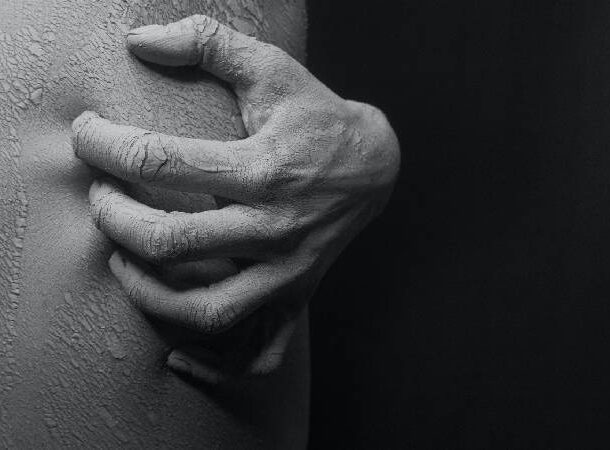 https://www.medicinenet.com/is_pancreatic_cancer_the_most_painful/article.htm
https://www.medicinenet.com/is_pancreatic_cancer_the_most_painful/article.htm Despite tons of research, cancer remains a poorly understood disease, characterized by reckless malignant growth of cells. We’ve identified more than a hundred types of cancer, all named for the organs or tissues where they form. For instance, brain cancer starts in the brain, lung cancer begins in the lungs, and so forth.
According to science, pancreatic cancer is the most painful. When pancreatic cancer infects the nerves near the pancreas, it compresses and irritates them, causing severe pain in the abdomen or back. Further complicating matters are discomfort or pain in the stomach, lots of wind, cramps, and bloating. As a result, pancreatic cancer is very hard to detect in its early stages – leading to an abysmal survival rate.



























